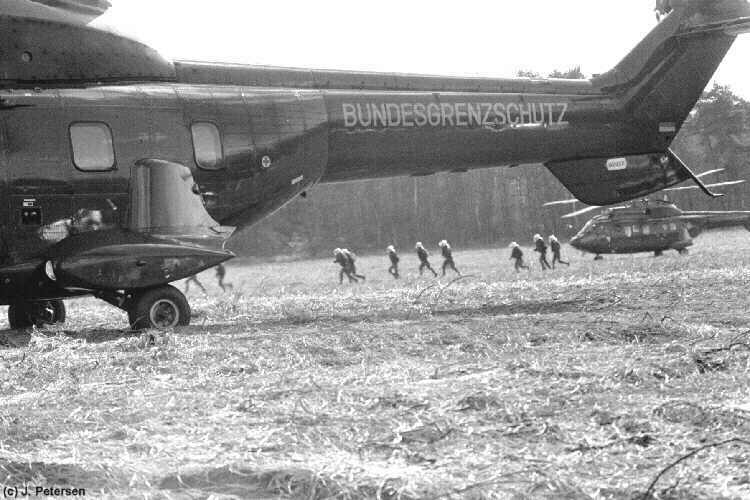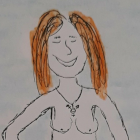Aftershocked – trauma and activism
Aftershock is a term coined by pattrice jones in her book of the same name. She writes:
“Aftershock is my word for the reverbations of traumatic events endured by activists. Aftershock may include posttraumatic stress or depression as these are experienced by people who have undergone other kinds of trauma but it may also involve reactions related to the context of activism.
In the natural world, an aftershock is a secondary convulsion or series of shake-ups following a major earthquake. According to Wikipedia on 20 March 2006, “Aftershocks are dangerous because they are usually unpredictable, can be of a large magnitude, and can collapse buildings that are damaged from the mainshock.” That’s exactly why I chose that word for the feelings that can follow one or a series of traumatic shocks. They are jolting, can shake up everything, and can leave people feeling like they are in ruins.”
And:
“Many activists are aftershocked not by what has been done to them but by what they have seen. Recall that even the stringent diagnostic criteria for PTSD acknowledge that witnessing death, injury, or the threat thereof to another can be a traumatic experience. In fact, some researchers have found that witnessing—and being helpless to stop or prevent—harm to another can have a greater traumatic effect than being a victim of violence oneself. Why? Because the feelings of helplessness and self-blame may be so much worse.”
In addition to witnessing violence or death, it is now recognised that just repeatedly listening to others talking about their experience of violence can lead to trauma – called secondary trauma: “Secondary trauma refers to a form of distress or trauma that’s experienced indirectly by hearing details of or witnessing the aftermath of a traumatic experience by another person. (…) Secondary trauma is especially common among various professionals who work with people who have experienced trauma, including physicians, psychotherapists, human service workers, and first responders.” - and human rights and peace activists, I would add.
Amnesty International, probably the most known human rights organisation globally, has had to work on secondary trauma. In an article from February 2019, The hidden victims of repression – how activists and reporters can protect themselves from secondary trauma, they write:
“Sam Dubberley, Special Advisor to the Evidence Lab and Manager of Amnesty International’s Digital Verification Corps, says in this report about secondary trauma: “If you are exposed to distressing experiences, even when you are not physically present, your brain has the capacity to experience symptoms of distress similar to those you would experience if you had been there. Our brains are wired to take steps to protect us from perceived threats to our safety. When we see something unexpected, the brain assesses what it is seeing to decide whether we are safe and secure or need to react quickly.”
Common signs of vicarious trauma include experiencing lingering feelings of anger, rage and sadness. In some more extreme cases, intense exposure to such content can lead to anxiety, stress, burnout, and post-traumatic stress disorder.”
I have my own experience with aftershock, activist trauma and secondary trauma. Being a survivor of childhood sexual abuse and complex trauma, I have always been an expert in dissociation. That has been my main strategy of survival in emotionally stressful situations, and only recently – having been able to connect with myself, with my emotions as never before – did I become aware of my aftershocks. I did not really forget the events, but until recently I had been emotionally numb in light of the events. So here are some of my aftershocks:
Germany, Castor nuclear waste transport, Wendisch-Evern, 2001
In March 2001, I joined the civil disobedience action of X-tausendmal quer in Wendisch-Evern. The plan was to blockade the nuclear waste train nonviolently, and to do so the large group of the camp did prepare itself to split and to try to blockade the train at two different points. The days before were already quite tense, as police did not allow to put up any tents in the camp, at night time temperatures of -9ºC – besides a kitchen tent and an office caravan. I was asked to join the small team which was in charge of liaising with the police command, as I had done this before.
On the day of the transport itself, everyone and every affinity group were ready and knew what to do and where to go. I joined the group which had a slightly larger way to get to the railway line. While we had no major problems getting through the first police lines using the five-finger tactic, when I got to near the railway line I already saw people coming up from the railway line bleeding from their head. Clearly, police tried to stop people getting onto the railway track beating them on their heads with their truncheons. I tried to call the police command, but unsurprisingly, nobody took the phone. They probably knew what was happening, and did have no intention to justify themselves.

Then I saw police transport helicopters arriving, flying quite low above us before landing nearby. Each helicopter was able to transport 20 riot police to the scene. How many helicopters were there? Maybe four, maybe five. I don’t remember. I saw riot police coming out of these helicopters, and coming towards us. And then I don’t remember anything anymore. I don’t remember how this ended, how I got back to the camp, or anything else. I do remember that I did not get injured. But beyond that – nothing. The image of riot police coming out of these helicopters is the last one I have.
I don’t remember if I went home from the camp the same day, or the next day. All the rest is a blurr…
When I think of this now, I remember bloodied heads and faces, and me feeling completely helpless, as I couldn’t intervene, couldn’t do what I was supposed to do according to the role I had volunteered for. And I have the images of the helicopters, the noise they made, the wind, and police coming out. And then nothing. Just writing this makes me want to cry now. Aftershocked.
Colombia, between 2006 and 2012
As part of my work for War Resisters’ International, I visited Colombia several times between 2006 and 2012, as I worked closely with Colombian conscientious objector organisations. While I did not experience violence myself during these visits, sometimes the stories I had to listen to did cause me what I now know to be secondary trauma. I remember listening to the stories of the “false positives”, youth, generally poor, either lured or kidnapped by the military, and then killed and presented guerrilleros – to get the bonus for every killed guerrillero. I listened to similar stories several times, sometimes by relatives of these youth. I vaguely remember one specific story, where youth from an indigenous village were lured to a camp in the forrest, supposedly to be recruited by the FARC guerrilla, but during the night they were drugged (something was put into their dinner), and at night the camp was bombed by the army. There was only one survivor. Listening to this story told to me by people from the village I felt extremely helpless.
I also remember being in a taxi with a colleague and a Colombian activist in Barrancabermeja. While we drove through one of the poorer neighbourhoods, he pointed to a house and said “in this house, they kill people”. “They” referred to the paramilitaries. And I thought that he, too, had received death threats from the paramilitaries. They could have killed him “in this house” too.
Back then, I just dissociated. But more recently, when I think of these events, I feel sad and helpless, but I also feel a lot of anger. And, often, I have to cry or at least I feel like crying. Aftershocked.
Turkish Kurdistan, May 2016
In May 2016, I joined an international factfinding delegation organised by War Resisters’ International, to Diyarbarkir and Cizre in Turkish Kurdistan. In our press statement after the delegation, we “concluded that the violent conflict between Turkey and the Kurdish PKK has caused enormous suffering and traumatisation among the civilian population of the Kurdish regions of Turkey. According to reports, since August 2015 at least 338 civilians and an unknown number of combatants have died, and more than 400,000 civilians had to flee their homes. According to the Human Rights Foundation of Turkey, about 100,000 of these people have no houses to go back to since their residences were totally destroyed.”
Another member of the delegation said: “We have seen parts of towns destroyed that reminded us of pictures from neighbouring Syria. We have seen bulldozers flattening ruins while old women were searching among the debris for remnants of their belongings. And we saw parts of the historical city of Diyarbakir hermetically closed of by police barriers, with nobody knowing what is happening behind the barriers”. I especially remember the visit to Cizre, which we saw the old women searching the debris. But it was not just any debris: “The public hopelessly witnessed residents, including children and injured people, remain stuck in basements in Cizre as the government denied access to emergency services. Turkey's Constitutional Court even rejected a petition to allow the evacuation of a building, and as a consequence people in the basements died either of loss of blood or as a result of the operation conducted by security forces. The exact number of civilians who died in the basements is still not clear but a locally organised crises group estimate that there were at least 178 dead”.
We walked through what remained of the neighbourhood, after months of shelling by artillery from the mountain nearby. We tried to talk to people who had returned to their homes – or more correctly, the ruins of their homes. Soon we were followed by police or military, so we could no longer talk to anyone.
However, the memory which really haunts me is the image of the old woman searching the debris, and thinking of the dozens, or hundreds of people who had died in the basements. Yes, I did not see the killings, the violence. But I saw the place where hundreds of people were killed by the Turkish military, I listened to the stories, and I saw the woman searching the debris. Aftershocked.
Aftershock is serious, as pattrice jones writes. It might fit into the criteria for posttraumatic stress, it might not, but it doesn’t matter. It can be debilitating.
I am now learning to cope with my aftershocks, with my activist experience of police violence and of secondary trauma. Even though my suffering might be nothing compared to the people living in Colombia or Turkish Kurdistan – and surely isn’t – my emotions are real. I can no longer dissociate from them, I can no longer ignore them. As the therapist said in the sessions when I told here about these memories, these images, I now am very connected with my emotions, so these things come up. And they require dealing with them. I can no longer ignore my aftershocks, nor do I want to.
That doesn’t mean I will not go back to do this kind of work or activism. I think it is important. I only hope that when I do so I am more able to accept the emotional toll, that I am more able to deal with the emotions nearer the time. It might not be possible or safe to do in the moment, but it should not again take me years or decades.
